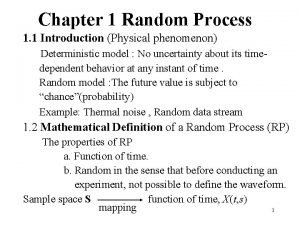The Flexicoking Process Flexicoking is a thermal technology



- Slides: 3

The Flexicoking Process • • • Flexicoking is a thermal technology for converting heavy feedstocks to higher margin liquids and producing, a low BTU (i. e. a low energy content) gas, instead of coke. The conversion of coke to clean fuel gas maximizes refinery yield of hydrocarbons. The carbon rejection process results in lower hydrogen consumption than alternative hydrogen-addition systems. The low BTU gas is typically fed to a CO boiler for heat recovery but can also be used in modified furnaces/boilers; atmospheric or vacuum pipestill furnaces; reboilers; waste heat boilers; power plants and steel mills; or as hydrogen plant fuel, which can significantly reduce or eliminate purchases of expensive natural gas. The small residual coke produced can be sold as boiler fuel for generating electricity and steam or as burner fuel for cement plants. CHEE 2404: Industrial Chemistry 1

Catalytic hydrogenation of residues • • • This is a “hydrogen-in” route. It serves two purposes: removal of Sulphur, Nitrogen and metal compounds, and the production of light products. Reactions are similar to those occurring in hydrotreating and hydrocracking of gas oils, but there are two important differences. (1) Residues contain much higher amounts of sulphur, nitrogen and polycyclic aromatic compounds; and (2) removal of metals, which are concentrated in the residual fraction of the crude, means that operating conditions are more severe and hydrogen consumption greater than for hydroprocessing of gas oils. CHEE 2404: Industrial Chemistry 2

Catalyst deactivation • Deposition of metals causes catalyst deactivation. Basically all metals in the periodic table are present in crude oil with the major ones being Ni and V. • At the reaction conditions H 2 S is present, hence metal sulphides are formed. • The reaction scheme is complex but may be represented simply as: Ni-porphyrin + H 2 Ni. S + hydrocarbons and V-porphyrin + H 2 V 2 S 3 + hydrocarbons • The catalyst is poisoned by this process because most of the deposition occurs on the outer shell of the catalyst particles, initially poisoning the active sites then causing pore plugging. CHEE 2404: Industrial Chemistry 3



